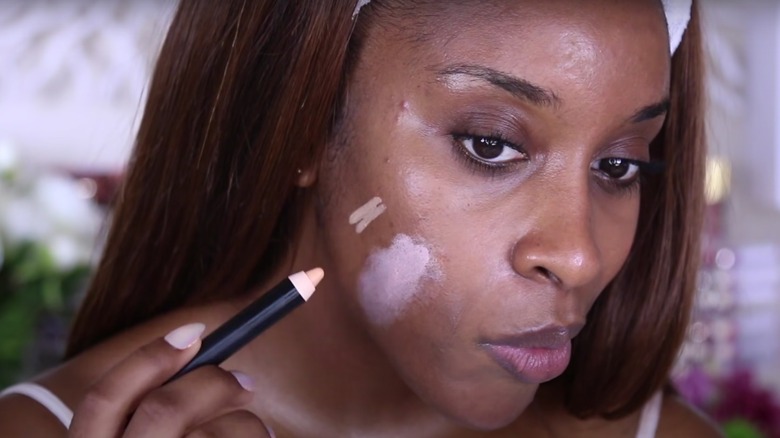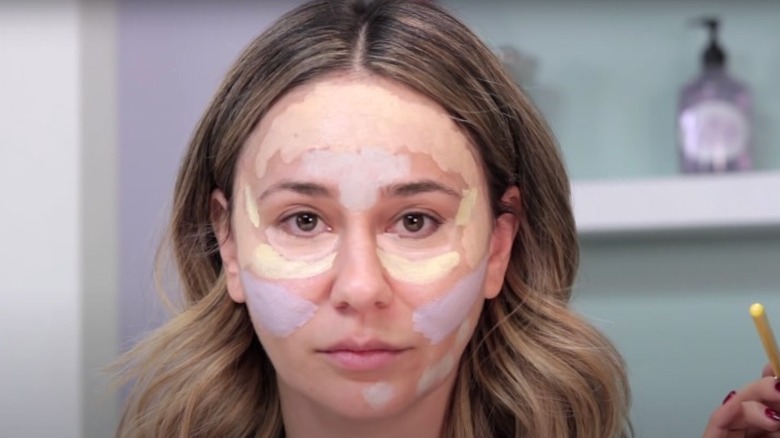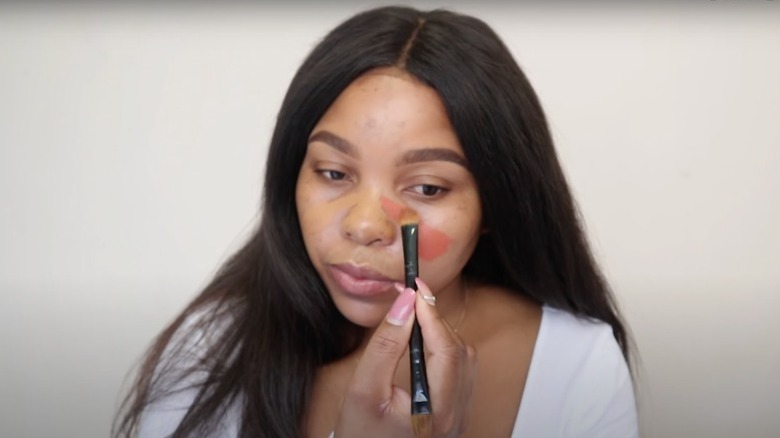Color-Correcting Your Hyperpigmentation Couldn't Be Easier
Color-correcting is a crucial step when trying to cover up hyperpigmentation. This method uses hues from the opposite side of the color wheel to neutralize discoloration. While these products come in many different shades, yellow is the one that works best for disguising hyperpigmentation on all skin tones. However, the hue you use depends on how your discoloration looks.
Hyperpigmentation is a term for darker areas that appear on the skin. It can occur for many reasons, but melasma, sunspots, and post-injury are the most common. These spots can look different on each person, leaving brown, black, gray, red, or pink patches on the face. Some are only tiny specks on the skin, while other people suffer from larger marks. Hyperpigmentation is created when your skin cells produce an excess of melanin that gives your skin its color. When you're trying to cover up these areas, you'll realize that it's harder than you thought. Foundations and concealers don't always have enough power to conceal dark discoloration. You should include color-correcting concealers in your makeup routine for complete coverage without using heavy products.
What colors work best for your complexion
Color-correcting helps you neutralize the hyperpigmentation on your face by applying the opposite hue on the color wheel to those on your skin. Since it works through color theory, the same shades won't work on everyone's complexion. Yellow and green are the exceptions because they'll work on everybody to remove redness. You should use yellow if the discoloration is mild or green if it's dark.
You should use peach concealer when correcting brown hyperpigmentation on fair to medium skin tones. It'll also cover up any blue tones. If you have a tan or dark complexion, opt for an orange color-corrector instead. Red is another shade that will neutralize brown hyperpigmentation. It works best for people with dark and deep skin tones. These colors also work well to cover under-eye bags. Sometimes purple and blue can be used for hyperpigmentation if it's very dark or if you have yellow undertones. Now that you know what color-correcting concealer hue is best for your complexion, you can put it to the test under your foundation.
How to color-correct
Adding color-correcting concealer to your makeup routine is easy. You should always start with a makeup primer so your products will stick to your skin and stay all day. Primer also helps blur your imperfections like fine lines and large pores. After you let it sit for about a minute, it's time to color-correct. The tool you use is up to you; concealer brushes, sponges, and your fingers will all work. The trick is to start with a little bit of product and blend it out. If you can still see a lot of discoloration, slowly build up the coverage. You can stop at this step for a natural and minimal makeup look, but if so, be careful not to use too much color-corrector. Instead, you'll want to blend it until it's sheer so there aren't patches of color on your face.
For more coverage, continue with a foundation. It's best to apply it by pressing the product into your skin. Swiping it will only rub the color-corrector off. Then you can add the concealer that matches your complexion. You can skip this step if you already have enough coverage over your hyperpigmentation. Lastly, you should finish your makeup with powder and a setting spray.


